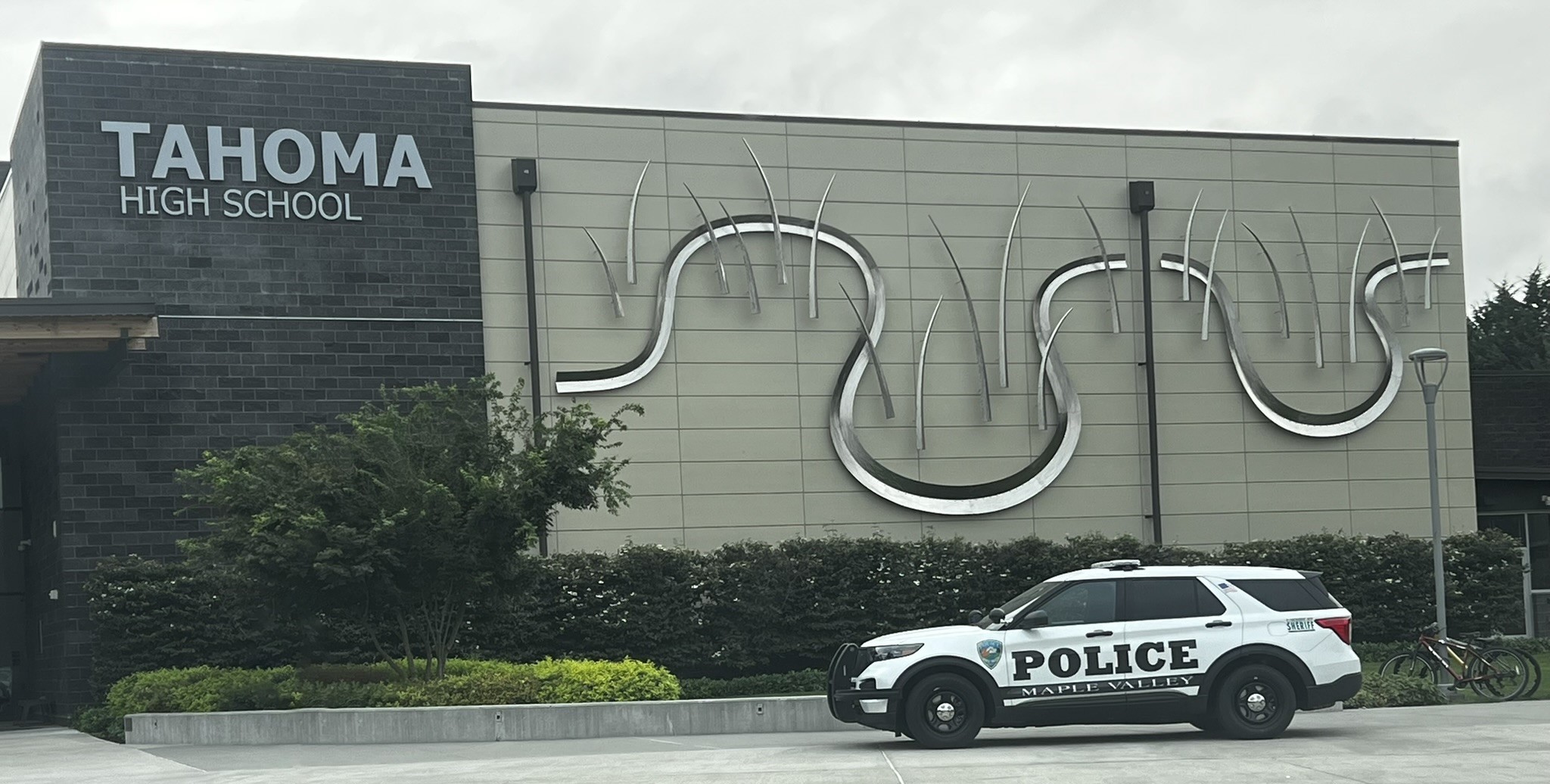Does police presence really make schools safer?
So far this year, there have been 35 school shootings that resulted in injury or death (additional shootings occurred in St. Louis and Seattle as this article was being written). Since the deadly shooting on May 24 at Robb Elementary in Uvalde, TX, parents there have been fighting to get answers from the district, who up until recently, had their own police department that failed to react and keep 19 of their children safe. In May of 2018, two campus officers also failed to protect 10 students who lost their lives that day due to gunfire. In fact, multiple studies have shown no correlation between the presence of School Resource Officers (SROs) and deterrence of violence in schools. For some students, having an SRO on campus can actually be less safe by criminalizing youth behavior and administrations utilizing law enforcement for discipline.
Twenty-seven percent of Washington school districts have SROs on their campuses. The Office of the Superintendent of Public Instruction (OSPI) has guidelines under RCW 28A320.124 outlining the responsibilities of districts who have security staff, including SROs. These guidelines include having updated policies and procedures, having a complaint process for families, and prohibiting SROs from being involved in formal school discipline. Despite this, data shows that students are arrested for bad grades, tardiness, cursing, obnoxious behavior, and criticizing or not following the directions of SROs. The students who are most often targeted are students of color, LGBTQ youth, and those with disabilities. Additionally, SROs are more likely to use force against these students including physical force and use of pepper spray and tasers. Hundreds of students go to schools that have SROs but no counselors, nurses, or psychologists who would be better educated and trained to respond to what are considered typical youth behaviors.
Once students have been arrested and introduced to the juvenile justice system, what is commonly referred to as the School-to-Prison Pipeline, the effects can be detrimental. Children end up missing large amounts of school and some even face expulsion for their arrest. These actions can cause children to face further harm such as increased abuse in the home, depression and anxiety, homelessness, and/or additional interactions with law enforcement.
Unnecessary and extreme punishment from educators and law enforcement sends the wrong message to our students on how to address the issues that life throws at them. A study completed by the Government Accountability Office (GAO) showed that 31 percent of shootings that occurred in schools were due to grievances or disputes. This data shows that many of our children are learning to handle their disagreements with unnecessary and extreme avenues instead of learning to collaborate with educators and peers in a more healthy manner.
To be sure, the presence of SROs in schools is not the only factor that leads to children being introduced to the juvenile justice system. Other factors such as drug use and truancy can be factors in youth interaction with law enforcement. However, data shows that arrest rates are 3.5 times higher in schools that have SROs than those that don’t even though youth crimes rates have decreased. Additionally, schools pay the salaries of the officers and local Washington school districts are paying anywhere from $500,000 to over $1 million per year to employ SROs.
If SROs are not the answer to school safety, then what can schools do to keep our kids safe every day? How can schools address discipline issues without resorting to law enforcement involvement? First, schools can invest money that would be used for SRO salaries in hiring counselors, social workers, and psychologists to address the needs of students who may be struggling or even for those that may need one-off advice. Additionally, changing school policies to eliminate restrictions such as dress code and zero tolerance policies that statistically target youth of color, LGBTQ youth, and students with disabilities, and instead use restorative justice policies that are a more positive alternative to addressing violence and conflicts in schools.
While ultimately the most reasonable protections would be stricter gun ownership and safety laws that keep deadly weapons out of the hands of those who wish to solve problems through violence, a more practical and quick solution would be for schools to focus more on positive discipline and restorative justice. This can be completed with less restrictive policies, care workers instead of law enforcement, and restorative justice practices. By involving family and community collaboration in policy creation, a diverse group of voices can be heard. This leads to increased empathy in students and educators allowing for children to learn in a more positive and less stressful environment while also teaching them productive dispute resolution skills that can be utilized throughout their lives.





